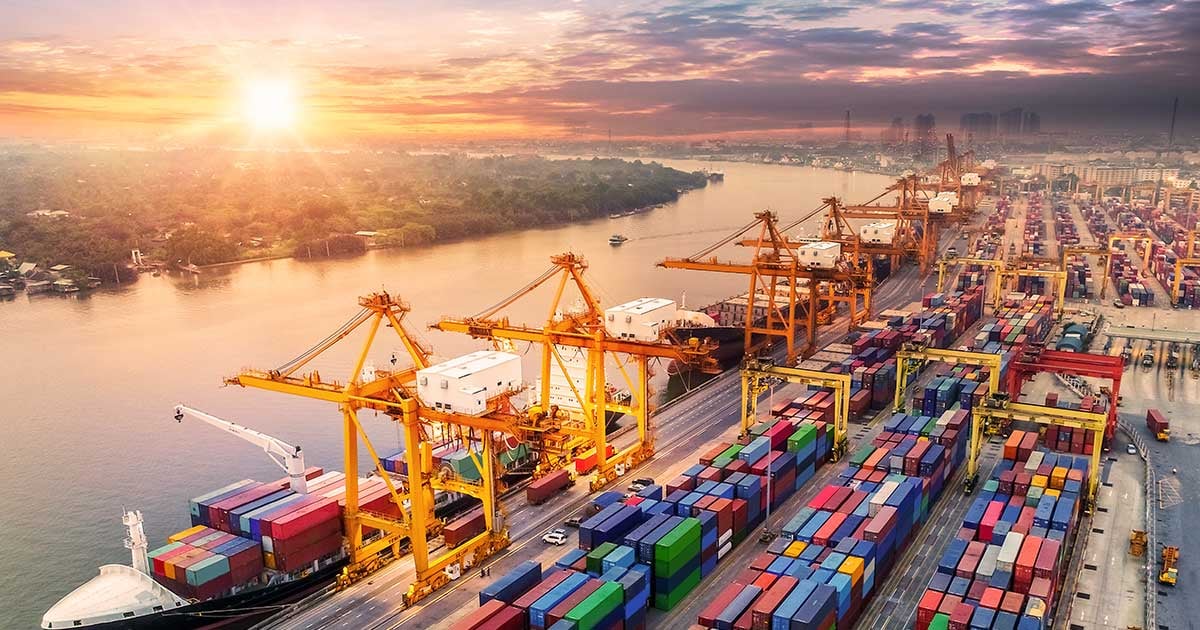The global supply chains are affected by the Covid-19 crisis, that is a fact. There was a delayed effect until the first effects of the lockdown in China was sensed in Europe, and this effect overlapped with the European lockdown. In ports, the number of seagoing vessel calls has stagnated in the beginning of the crisis and after a few months they’ve dropped as well (-5.6% in 2020 as compared to the same period of 2019). In the later months, this drop was then accelerated by the hit that Europe has received from Covid-19. Along with slightly lower vessel calls, the cargo volumes handled in European ports have drastically dropped (-7.9% compared to the same period of 2019), leaving port stakeholders to operate the remaining volumes with reduced personnel (to reduce costs).
This change has happened very fast, and it didn’t follow the documented fallback plan. It addressed fundamental questions on the robustness, resilience and indeed the very structure of global supply chains, where ports are the key nodes. Moreover, it set on hold, for an undetermined period of time, investments that only a few months or years before were set to deal with increases in volumes. The sanitary crisis puts a new layer of pressure on the decisions to invest in the traditional development pillars of ports: sustainability, digitalization, infrastructure (physical capacity) etc. In a world where employees follow social distancing rules a key question still remains unanswered: is the port digital transformation accelerated or pushed to a halt in the Covid-19 crisis?

Three major Covid-19 trends that are visible in the supply chain
We observe three major trends that were amplified by the Covid-19 crisis.
1. A remote or low-touch workplace for all
The lockdown measures have caught the digital laggards by surprise. Companies with port related activities were forced to let their personnel work from home and to foresee remote connectivity to business critical applications. The change to remote work has been much easier and less costly for firms that were already allowing their workers to work from home. For essential workers, a low-touch work environment had to rapidly be provided. Additionally, companies that digitized their workflows (with external parties) reaped the benefits of less physical interactions.
2. Increased adoption of existing digital (communication) solutions
This crisis has generated a greater and unprecedented demand for digital solutions that enables remote communication, which all of a sudden had to be in place. These tools had to foresee experiences almost comparable to live meetings, user-friendliness, high privacy standards and interoperability with other digital tools. It’s no secret that Microsoft Teams and Zoom enjoyed a dramatic increase in adoption worldwide.
Yet, these principles are not applied only to communication tools. In maritime-logistics we have seen Maersk’ digital Spot booking solution grow 10-fold during the second quarter of 2020. The demand for the social distancing bracelet RomWare has experienced a similar demand surge. The heightened pressure on supply-chains has given container traceability and monitoring solution provider Traxens leeway to close key partnerships in Europe and Asia.
3. Less exploration, more focus on business as usual
In this period, port stakeholders have to handle lower volumes, which incurs lower revenues. The willingness to pay for new, untested solutions has lowered. The cost-effectiveness of digitalization has become even harder to prove in a scenario that has no precedent and no predictable evolution. In this context, port stakeholders realize that sticking to the business as usual scenario is the safest strategy to follow. There is less urge to exploration or collecting benefits from taking the first-mover role in the market for the moment. The crisis has not only affected the business of one stakeholder, it has also impacted the services sector surrounding that stakeholder as well.
Getting a grip on a the digital port transformation in Covid-19 times
Time will tell the real impact of Covid-19 and its effects on the digital transformation of ports. The sanitary crisis is not over yet, and increasingly there are doubts on whether there will even be a vaccine available in the coming year. The remote or low-touch workplace may be here to stay. The uncertainty in the market environment and the adoption of a low-risk behavior has played in favor of the adoption of existing established digital solutions. The effects of Covid-19 is seen on the market of new radical innovation, which seem to be delayed.
Some trends in the background may play in favor of digital transformation and the energy transition. The aid-packages from large institutions such as the European Union may stipulate requirements regarding emission and inter-operability of transportation systems. The near-zero interests rate might push capital into the pockets of maritime-logistics entrepreneurs. But now is too early to make any definitive statements on the digital transformation of ports. In the SPEED project we will analyze these discussed trends and report on it in the coming year.
SPEED stands for Smart Port Entrepreneurial Ecosystem Development and aims to facilitate the smart port innovation market by translating port challenges into achievable use cases and attracts technology players from all sectors to develop solutions for them. We organize a wide range of activities to address the expectations from A-level start-ups to C-level port executives.



